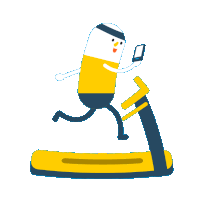

Benefits of High Kneeling Exercises
Muscles Targeted in High Kneeling Exercises
Proper Form and Technique for High Kneeling Exercises
Progression and Variation of High Kneeling Exercises
Incorporating High Kneeling Exercises Into Your Workout Routine
Importance of Scapular Retraction
Effects of Scapular Protraction
Exercises to Improve Scapular Retraction
Physiotherapy Services Offered
Our physiotherapy services include
Welcome to Fitway, your trusted source for fitness and strength training insights. In this article, we will delve into the world of high kneeling exercises and their profound impact on developing a stronger core. Renowned for engaging multiple muscle groups and enhancing core stability, these exercises have become increasingly popular in functional bodybuilding. We will explore the benefits, muscles involved, proper technique, progression, and incorporation of high kneeling exercises into your workout routine. Whether you're an athlete or fitness enthusiast, this article will provide evidence-based tips to help you achieve your goals.
High kneeling exercises offer a multitude of benefits for improving core strength and stability. These exercises, performed in a kneeling position with the hips flexed to 90 degrees, engage the muscles of the core in a unique way, leading to increased strength and stability in the torso. One of the key benefits of high kneeling exercises is the activation of the deep stabilizing muscles of the core, including the transverse abdominis and the multifidus. These muscles help to maintain proper posture and stability during movement.
In addition to core strength and stability, high kneeling exercises also help to improve balance and proprioception. By performing exercises in an unstable kneeling position, the body must work harder to maintain balance, which in turn activates the muscles responsible for stabilizing the body. This can enhance overall body control and coordination.
Furthermore, high kneeling exercises can be modified to suit different fitness levels, making them accessible to individuals of all abilities. By adjusting the range of motion or adding external resistance, the intensity of the exercises can be increased or decreased as needed. This versatility allows for progression and ensures that individuals can continue to challenge themselves as they become stronger.
High kneeling exercises primarily target the muscles of the core, including the transverse abdominis and the multifidus. These exercises also engage other muscle groups to provide stability and support. Here are the key muscles worked during high kneeling exercises:
When performing high kneeling exercises, it is essential to maintain proper form and technique to maximize their effectiveness and minimize the risk of injury. Proper form ensures that the targeted muscles are effectively engaged and that the exercise is performed safely.
To maintain proper form during high kneeling exercises, start by positioning yourself on your knees with your torso upright and aligned with your hips and knees. Keep your shoulders relaxed and away from your ears, and engage your core muscles by pulling your belly button towards your spine. This will provide stability and support throughout the exercise.
As you perform the exercise, focus on controlling the movement and avoiding any jerky or sudden motions. This will help you maintain proper alignment and prevent unnecessary strain on your muscles and joints. Remember to breathe properly, exhaling during the exertion phase of the exercise.
It is also important to progress gradually and listen to your body. Start with lighter resistance or bodyweight exercises and gradually increase the intensity as your strength and stability improve. Additionally, you can incorporate variations and modifications to add challenge and prevent plateauing.
To further challenge and continue developing your core strength and stability, it is important to explore progression and variation options for high kneeling exercises. Here are five ways to progress and vary your high kneeling exercises:
Continuing the exploration of high kneeling exercises, let's now delve into how to seamlessly incorporate these exercises into your regular workout routine. High kneeling exercises can be a valuable addition to your workout routine, as they engage multiple muscle groups simultaneously and improve core strength and stability. To incorporate high kneeling exercises into your routine, start by selecting a few exercises that target different areas of the core, such as the kneeling plank, kneeling Russian twist, and kneeling mountain climbers. You can include these exercises in your warm-up or as part of your core workout. Additionally, you can combine high kneeling exercises with other strength training and cardiovascular exercises to create a well-rounded routine. Remember to maintain proper form and alignment throughout each exercise, engage the core muscles, and gradually increase the intensity as you improve your core stability and strength. By incorporating high kneeling exercises into your routine, you can enhance your overall fitness and achieve a stronger core.
In conclusion, high kneeling exercises offer numerous benefits for developing a stronger core. They engage multiple muscle groups and improve core stability, making them effective for athletes and fitness enthusiasts alike. By incorporating high kneeling exercises into your workout routine, you can enhance adherence to a varied program and experience the variety of movement patterns they offer. With proper form and technique, progression and variation of these exercises can further improve core strength and overall fitness.
.png)